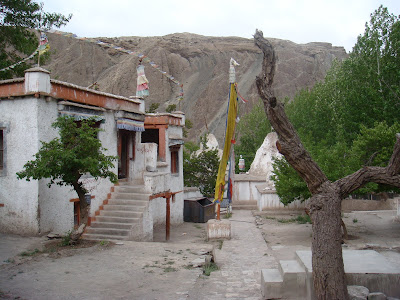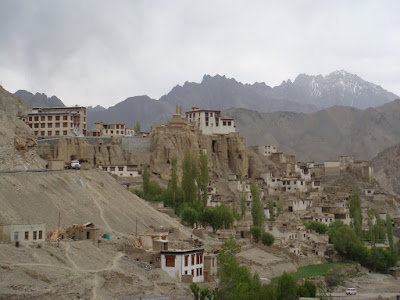How much effort it took me to get to Alliance Francaise from Jayanagar. No one has heard of the place, Rick drivers don’t know the route and then one ways everywhere. What more, it started raining just when I got down from the auto to walk to the venue…
And all this for what joy?
Watching a play that’s wasn’t quite a play by a troupe that’s not ready yet to enter stage.
Kahlil Gibran’s Prophet by this troupe Soham, directed by a certain Yogesh Master. In one sentence, a performance that was on the whole, ridiculous.
First of all the book Prophet by Gibran does not lend itself to the stage. When I leant of the event, I was curious to know what the troupe had done to adapt it to the stage. It was curiosity that made me book my ticket.
As I said, the book does not lend itself to the stage. But there was scope to make a beautiful pantomime of it –
Pantomime is where emotions, actions, feelings, etc., are conveyed by gestures without speech.
- a play or entertainment in which the performers express themselves mutely by gestures, often to the accompaniment of music.
A lot of property could have been used. Huge screens with pictures in the background, changing according to the message.
The setting of the story – an approaching ship on the sea with Almustafa and his people gathered on the beach – provided enough scope for stage arrangement.
The play of colour and light would have made it charming.
Music – Sufi I think - would have befitted the occasion.
Costume required special attention – to suit the historic period and geography.
Actors could have floated skillfully on stage while the narrator told a story.
The audience could have been transported to a different world.
All the above are what could have and should have happened.
What actually happened was this.
The play was introduced by someone who was barely audible and low in confidence, which was obvious from the way he spoke. His English was poor and pronunciation, imperfect. To me, that was an indication of what was to come. I still hoped I was wrong.
Then followed a series of acts that had no relevance whatsoever. This was before the narration of the story began. A kind of slow dance by a group of topless men that was too prolonged.
And then, there appeared a clothesline on the stage with the faded over-washed gowns clipped to it, meant for the actors. The actors then clumsily slid into those gowns still clipped to the clothesline and then unfastened the clips. And then they danced some more, to a tune that was not particularly remarkable.
The narration turned out be just the reading from the book - every line as it was - by a guy who had no reading skills.
The actor who was Almustafa delivered his own lines while all else listened around him.
Thus, as a boring act went on, there were a series of histrionics that a college kid would have deemed immature.
The first one preceded the chapter on marriage. One of the members of the troupe who was not in costume rose from the audience, and shouted at a lady actor trying to enter the stage- twice or thrice; a crude depiction of oppression that was a sort of preparation for the message on marriage that space is necessary between man and woman.
There were two, no one, but two such acts of irrelevance preceding the chapter on children. The lady actor actually carried a half asleep toddler in her arms and gave him to Almustafa as she asked him to speak on children. I don’t know how they put the baby to sleep at the right time and I wonder why he did not wake up, not even murmur, leave alone howl.
The baby had anklets on it with those tiny bells that jingled!
A few lines from the chapter on children were delivered and someone was rapping the door to the entrance. The man was shouting “I have not come here to watch your play. I want to see my son…” For a minute, I was not sure if this was an act or this was real. What followed showed that this was an act. And a most thoughtless one. A middle aged man, in jeans and shirt, carrying a back pack, barged in, went on the stage and began shouting at one of the actors “you haven’t come home in 3 days. I will not leave you this time….”
This was followed by the message on children…how children come through you, not from you, learn from them, do not give them your thoughts and all…
Meanwhile the baby who had woken up from sleep was walking all over the stage, not speaking, not crying, what with its anklets making the low jingling sounds…
Don’t know what the relevance was.
A corner of the stage was occupied by a lady on a cot who had an assortment of objects spread on the cot. Who was she and what was she doing there?
The younger lady actor, the baby also occupied it whenever their legs ached and they wanted some rest.
Then there was the chapter on work when some equipment was brought by all actors and deposited on the stage so everyone could see.
When the chapter on food started, one of the actors actually walked between the aisles and distributed nuts in leaf cups to a few lucky people in the audience.
The baby continued its rambling on the stage…
Just when I thought there were so many more chapters and this was going to take long………the whole thing abruptly came to an end.
Last but not the least, the words of the director, Yogesh master, after all of them had been introduced, deserve special mention.
“I would read prophet by Gibran to my troupe members and these people would not understand it. So everyone suggested, why not take this to the stage? Hence this play”. WHAT???
Moral of the story. Anybody can stage a play. You can get away with bad performance.










































































